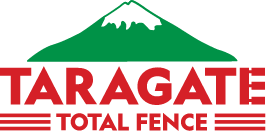The recent spotlight from NZ Waikato Police on the need for landowners to check the integrity of their fences and gates to help ensure safety on our roads prompts the opportunity for a discussion on the requirements for a good boundary fence for animal security.
Original NZ Police article can be found here: https://www.police.govt.nz/news/release/police-say-solution-problem-stock-roads-lies-partnership-not-blame
The poem from 1914 by Robert Frost claiming ‘good fences make good neighbours’ remains as true today as it was then. But it’s not just about the neighbours, there are so many more applications for effective fencing: stock management, land & pasture management and crop/stock protection (safety & security) too.
Stock Management: fencing makes both containing and moving animals much easier as well as the ability to isolate or separate animals due to sickness and/or breeding.
Land & Pasture Management: facilitates rotational grazing practice and manages feed availability.
Crop/Stock Protection (safety & security): fencing is an effective way to protect animals and property from trespassing animals and humans, help prevent theft and keep out pests/wildlife/neighbouring animals.
Environmental: Fencing is also used to section off waterways for environmental protection.
So, what can you do to ensure your fences are up to the task?
Regular Maintenance: Check your fences at least twice a year (spring & autumn) looking for loose or broken wires and batons and replacing insulators and staples where needed.
- Check your fences remain fit for purpose – a 7 wire fence may not be sufficient for pigs, goats or bulls. Adding electric fencing and/or outriggers may solve this by increasing the fences width (and height) so stock can’t reach over a fence or are deterred from trying to break through. Retrofencing permanent fencing with outriggers is the quickest and most cost-effective way to do this.
- Wait for some rain before tightening wires – tightening wires in dry summer months where posts are often loose due to the dry soils could force them and out of the ground from the increased tension. While a wire fence should always be kept tightened, you should think of it as being like a rubber band – if something runs into it you want the fence to have some give in it rather than being so tight it just slices like a grater.
- Leave gates exactly as you find them. If you find a gate closed, close it after you’ve walked through. Most animals that escape just walk through a gate that has been accidentally left open. Once out on the road, you may be liable if an accident is caused by negligence. Consider padlocking any gate on a boundary at both ends, so it can’t be lifted off its supports. Also check your gateways, particularly tapegates or bungy gates for either repair or replacement; both are quick and economical.
- If you are having problems with a weak pulse from your electric fence and you can’t find an obvious short, go back to the unit and look at its grounding stakes. Buy a voltmeter, as you get closer to a short, the volts will reduce. Common causes of shorts are overgrown vegetation, a break in the wire, or a poor join.
Damage to your fences will result in headaches and knock on effects, so keep proactive and on top of your fencing maintenance for the best outcome.
